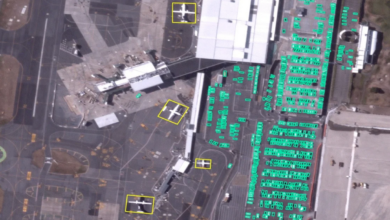US Space Force Missile Warning System Passes Design Review
The United States Space Force (USSF) Next-Generation Overhead Persistent Infrared (OPIR) missile warning satellite program has passed a critical design review (CDR).
The OPIR is the planned successor to the Space-Based Infrared Systems (SBIR) program. Utilizing infrared sensors to detect enemy missiles through their heat signatures, the system is “designed to provide a resilient space-based global missile warning capability against emerging missile and counter-space threats.”
Need for Upgraded System
National Defense Magazine quoted Col. Dan Walter, senior materiel leader for Next-Gen OPIR at Space and Missile Systems, who explained why the USSF needs a missile warning system with more capable sensors: “… there are shorter burn missiles, there’s advanced fuel, there’s a larger range of heat signatures.”
“We are improving the capability above and beyond what SBIRS has right now to be able to detect a broader range of the missile arsenals that are out there.”
Following CDR completion, the program will see, “flight-unit fabrication, assembly, system integration, and test,” the USSF revealed.
Satellite Launch in 2025
Col. Brian Denaro, director of USSF Space Systems Command’s (SSC) Space Development Corps, added that CDR completion allows the program to launch a planned geosynchronous equatorial orbit (GEO) satellite in 2025.
“As the backbone of our nation’s assured missile warning capability, we are leveraging streamlined acquisition authorities on the Next Gen OPIR program to prototype solutions rapidly, using available industry capabilities and mature technology, to ensure that we can deliver advanced capabilities to the warfighter at operationally relevant speeds.”
Earlier this year, Lockheed Martin was awarded a $4.9 billion contract to provide three geosynchronous Earth-orbiting space vehicles and ground mission software for the program.
The Next-Gen OPIR Block 0 GEO System Critical Design Review is expected later this fall.












